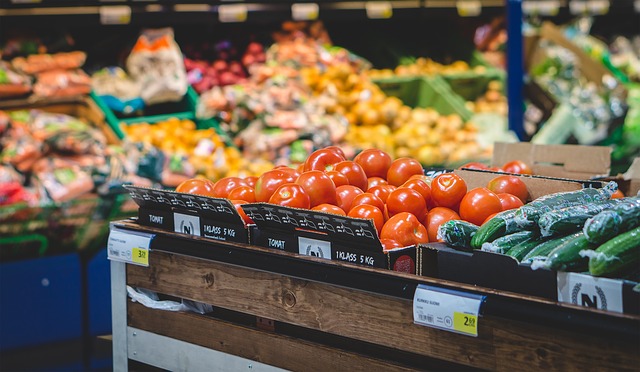 Hello, friends. This is the first post in a 3 part series where we will share tips on how you can take steps to help reduce the risk of your child heading down the path to childhood obesity. We hope you find that you can use many if not all of the tips to ease the struggle that we all face when trying to keep our children healthy and happy through good nutrition.
Hello, friends. This is the first post in a 3 part series where we will share tips on how you can take steps to help reduce the risk of your child heading down the path to childhood obesity. We hope you find that you can use many if not all of the tips to ease the struggle that we all face when trying to keep our children healthy and happy through good nutrition.
Part 1- Filling the Fridge
These days, American parents’ budgets and time are stretched to the max, leaving little means to equip kids to eat healthy and lead healthy, active lives. Refrigerators are stocked with processed food because it seems cheaper than buying fresh fruits and vegetables. Kids are more apt to pitch their lunches regardless, since tastier options are available at fast food restaurants and convenience stores right around the corner.
With nearly one in three children being overweight or obese today, childhood obesity is now threatening the future of our country. If we don’t solve this problem, one third of all children born in 2000 or later will suffer from diabetes at some point in their lives. Many others will face chronic obesity-related health problems like heart disease, high blood pressure, cancer and infertility.
So what do parents do?
According to Janice Walker Pinnington, Founder of Healthy Hands Cooking that teaches kids and families, ages 2-Adult, about nutrition and healthy cooking, enabling our kids to achieve a healthy weight is a two-step process. “First we have to fill the fridge with the right stuff,” says Pinnington. “Second, and perhaps more importantly, we need for our children to learn and think for themselves that eating healthy and being active is just the better way to go.”
Stocking the Fridge Properly
With grocery aisles lined with cleverly marketed product, it’s tough to tell what the right options are for filling the fridge properly for our families. Pinnington recommends following these basic guidelines.
- Eat Clean. Keep your food sources as close to Mother Nature as possible.
- Take the Science Out of Your Food. If you can’t pronounce it, you probably shouldn’t be eating it.
- Shop Wisely. Fresh and healthy food should be affordable! Use coupons, weekly sales, in-store specials, farmers markets and buying clubs to get the most for your money.
- Shop Seasonally. Seasonal produce is more affordable, which will help keep anyone in budget and will also reduce environmental costs of long distance transportation.
- Avoid Trans Fats. This includes partially and fully hydrogenated oils. Avoid labels that claim 0g trans fats, since there are still trans fats in the product (ingredient list should confirm).
- Avoid Excess Sugars. Look for foods that are minimally sweetened, sweetened with natural sugars (e.g. fruit juice, honey, maple syrup) or use a safe natural alternative (i.e. 100% stevia powder).
- Reduce Refined Carbohydrates. Avoid bleached, white flours and sugars. Look for multi-grain, 100% whole grain and 100% fruit/vegetable juice on the label.
- If it’s not cost prohibitive, shop grass-fed and/or organic. Grass fed or organic meats are not only free of antibiotics, hormones and growth promoters, but the animals are also fed grass and/or organic feed and raised in a healthier environment. Organic foods (i.e. dairy, meats, grains, legumes and produce) support a cleaner environment and a healthier and more nutritionally sound mind and body. They are GMO-?free, as well as being free of antibiotics, growth hormones, pesticides, herbicides, sewage sludge and irradiation. Look for organic ingredients listed, “made with organic ingredients” stated or the USDA Organic certification seal. When shopping for produce, look for a 9 on the PLU sticker or ask your local farmer.
- Avoid GMOs. Genetically Modified or Genetically Enhanced ingredients. GMOs are designated with an 8 on the PLU sticker for produce. Labeling is an option, not a mandate, and is rarely done. Support your state’s initiative to mandate GMO labeling of our foods. We can also vote with our pocketbooks by buying GMO-free and/or organic foods! Visit www.NonGMOProject.org and see if your favorite products are verified!
- Avoid Artificial. Avoid artificial sweeteners such as acesulfame-?K (acesulfame potassium), aspartame, sucralose (Splenda) and saccharin; artificial preservatives such as ammonium chloride, azodicarbonamide, BHA (butylated hydroxyanisole), BHT (butylated hydroxytoluene), potassium benzoate, potassium bisulfite, potassium bromate, potassium metabisulfite, etc.; and artificial colorings and flavorings such as carmine, vanillin, ethyl vanillin, titanium dioxide, D&C blue # 1 & 2, red dye #40, yellow #6 ,etc.
Healthy Hands Cooking is a movement to fight childhood obesity by certifying and empowering instructors to teach children and families about nutrition and healthy cooking. Our instructors are passionate moms, dads, teachers, nutrition grads, entrepreneurs, wellness advocates and more. www.healthyhandscooking.
Pingback: Reversing the Childhood Obesity Trend-Easy Ways to Ensure Your Child Remains Active and at a Healthy Weight (Part 2 of 3) – Healthy Hands Cooking
Pingback: Easy Ways to Ensure Your Child Remains Active and at a Healthy Weight (Part 3 of 3) – Healthy Hands Cooking